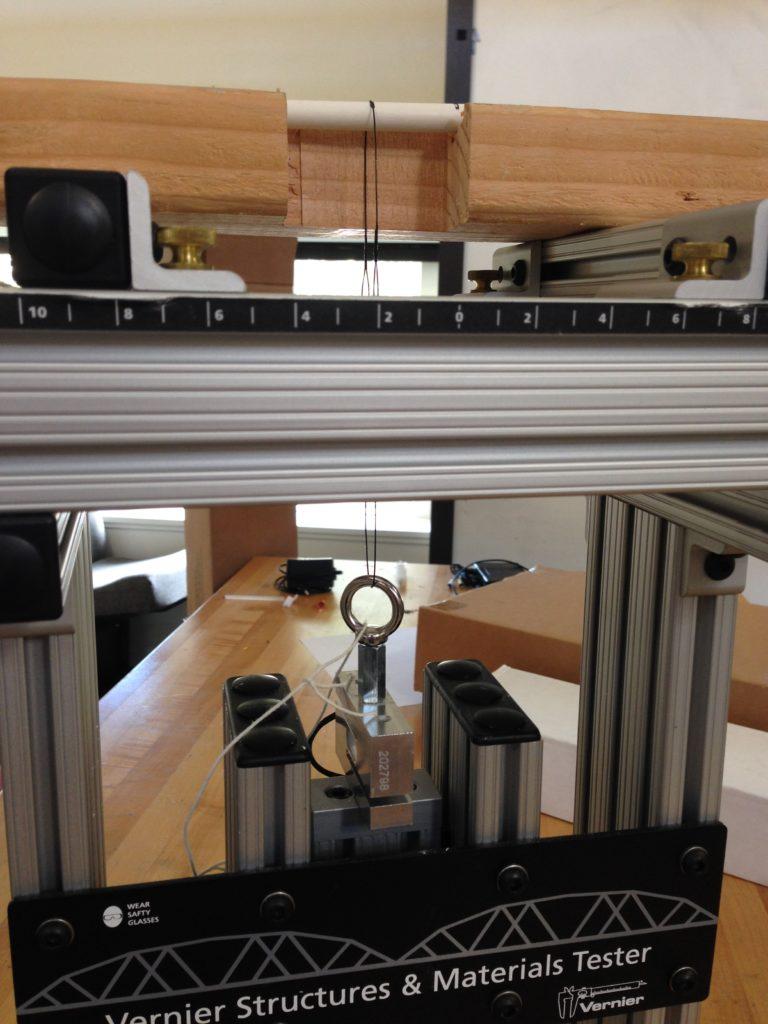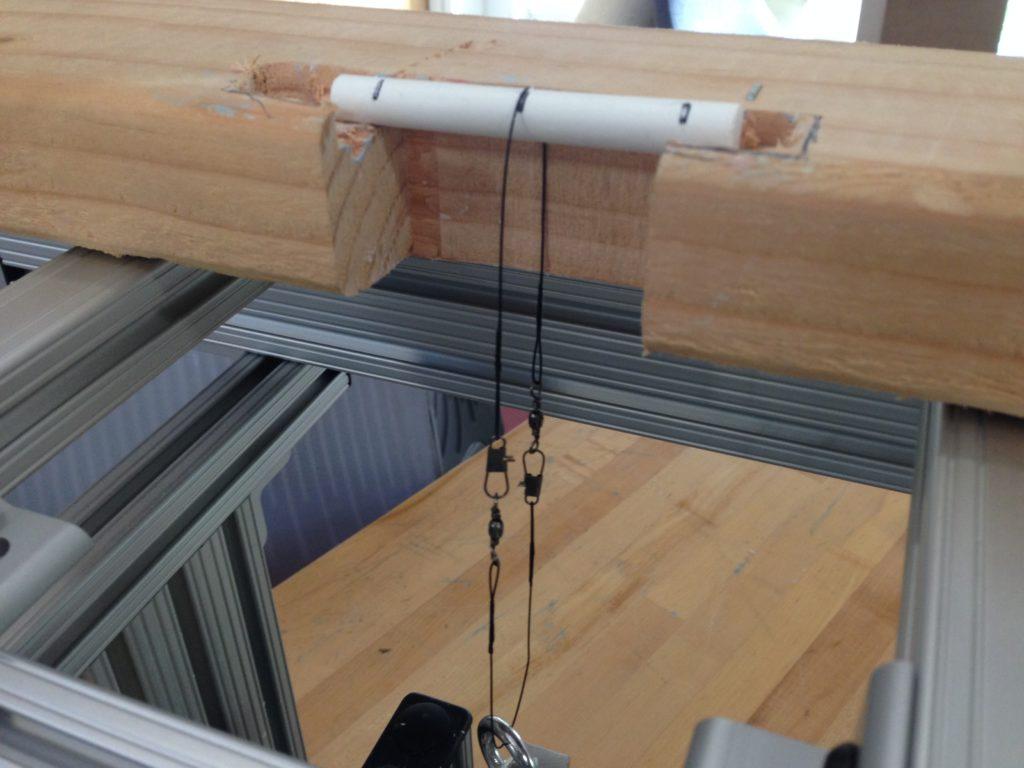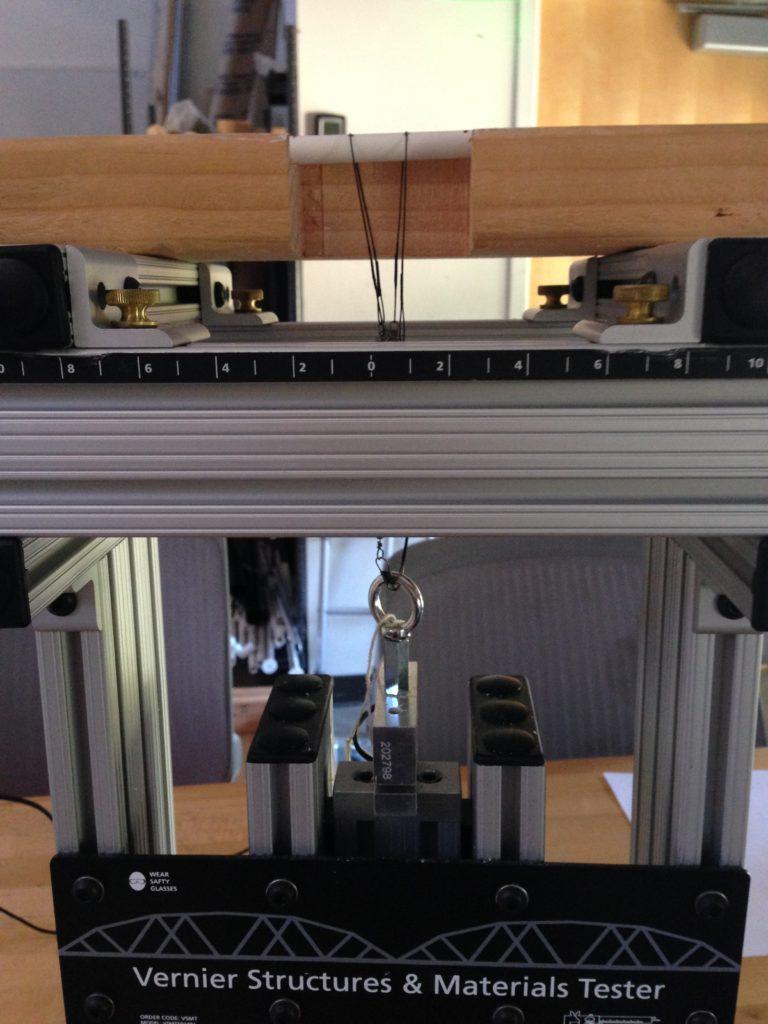Shane Clarkson, a master’s degree candidate in Mechanical Engineering at Stanford University, has come up with a great reason to keep chalk on your purchasing list. Shane has developed an experiment for introductory engineering students to explore the strength of blackboard chalk.

In the experiment, students determine the average measured fracture force for chalk by using the Vernier Structures & Materials Tester (VSMT) to break chalk under conditions of a centered 3-point load. Using this data, they predict the theoretical fracture force for 3-point offset and 4-point loading conditions and verify these predictions with the VSMT.
Shane works with the Designing Education Lab at Stanford and spent the summer of 2015 working with professors Mark Schar and Sheri Sheppard to rethink and update a “chalk lab” for the undergraduate course ENGR14: Intro to Solid Mechanics. Shane devised a simple fixture to hold the chalk securely on the VSMT and applied the force with loops of fishing leader connected to the load cell. While the materials seem fairly straightforward, it took several iterations to finally decide exactly what to use, based upon different effects on the chalk.

The lab procedure begins with the students setting up chalk on the fixture and using the VSMT to apply a downward force until the chalk fails. Students record the maximum force applied and use this value to determine the stress experienced at failure. They then use the value of the material strength to back-calculate theoretical values of fracture stress under different loading conditions. Finally, students use the VSMT to break chalk under the different loading conditions and compare with the theoretical values.

A primary lab objective is to provide students with the opportunity to consider the implications of variation in data. Chalk is not a homogenous material; it is subject to fracture and has variations in strength. Using the VSMT provides students with more reliable and reproducible data than the previous method of using a spring scale. This allows the students to separate variability in the material failure from variability in the measurement. The improvements to the lab are two-fold:
- The VSMT allows for more precise measurements that provide an improved exploration of shear strength, and
- They provide a concrete example of how improvements in instrumentation can provide insights into the actual mechanism being explored.
In this way, the VSMT expanded the scope of the chalk lab while also allowing for more precise measurements, resulting in a more robust exploration of shear strength for this lab.
See a poster presentation of Shane’s revised lab findings »
Shane’s work inspired us to create a lab to explore 3-point and 4-point loading. Download a copy of the Student and Teacher versions of this activity from the experiments section of the Vernier Structures & Materials product page.
